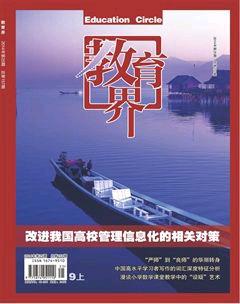佛經翻譯中的合作翻譯初探
黎穎
【摘 要】Collaborative translation (co-translation) is a translation pattern in which at least two people are involved. Early in the era of Buddhist sutra translation, co-translation made the translation of Buddhist sutras possible. When Yi Chang (translation center) was established, participants were given different responsibilities to finish a translation collaboratively.
【關鍵詞】Buddhist sutra translation collaboration translation center
1 Definition of Collaborative Translation
Translation activities can be classified into independent translation and collaborative translation. Collaborative translation means the work is completed with the contributions of at least two participants. One of the most significant features of co-translation is the partnership it calls for.
2 History of Collaboration in Buddhist Sutra Translation
2.1 Co-translation before the Setting of Translation Centers
Translation of Buddhist sutras originated in the ruling period of Emperor Liu Zhuang of Eastern Han Dynasty and terminated until the ruling of Zhao Qi in Northern Song Dynasty, i.e. from 58 BC to 1063AD.
In the initial stage, no written sutras were kept thus there was no translation but only interpretation. Liang Qichao holds that “no written sutras were involved in the interpretation, and the source texts were recitations from the interpreters…because no written scriptures were available.” (159)
Early co-translation involved a foreign Buddhist master or monk and a Chinese follower. When they were doing their work, one of the participants interpreted the sutras while the other worked as a “clerk” to write down the interpretations. Sometimes three or more persons were involved. The master would recite or read the original sutras, and the second participant would serve as an interpreter while the third wrote down what he heard.
The crucial reason for the existence of co-translation in that historical period was that the interpreter of the original sutras usually had a poor knowledge of the target language, thus solitary effort was not adequate. A scribe who mastered the target language much better (usually a local follower) would help to make the renditions appear more readable.
At that time no systematic organization was adopted, and most of the translation activities were conducted randomly.
2.2 Co-translation after the Setting of Translation Centers
“During Western Jin Dynasty (265-317), Lan Fahu had rendered…more than 150 Buddhist scriptures in two decades. He was regarded as the top in terms of the amount of rendered scriptures. Till then the rudiment of Yi Chang (translation center) had emerged ” (徐天池 91).endprint
Yi Chang was an organization through which participants gathered together to render Buddhist sutras into Chinese, or it may be taken as a translation mode in which people with different functions collaborated and coordinated with one another to undertake a specific translation task. In the initial stage, despite the fact that the number of participants was only a few and the division of work was not very elaborate, the quality of renditions and the efficiency were actually improved.
“In 401 AD, Kumarajiva organized translation centers in Xi Ming Ge and Xiao Yao Yuan in the city of Changan. He led Sheng Zhao and Sheng Qing and other 800 people to undertake the task of Buddhist sutra translation” (袁錦翔 53). Translation activities in the centers gradually became greater in scale, and the division of labor boasted deliberateness. “In Tang Dynasty, the translation centers presided by Xuan Zang in particular had a fairly strict system in which up to 11 positions were set.” (鄭延國 25). The translation center developed gradually into a standing organization, and each participant was given specific work to do, thus systematic work was achieved and better results came out.
Collaborative translation as a mode of translation plays a significant role in the rendering of Buddhist sutras. Collaboration not only makes translating activities possible, but improves both the quality and quantity of translations, thus worth further study and applying.
【參考文獻】
[1]徐天池. 論佛經翻譯的譯場[J]. 四川師范大學學報(哲學社會科學版), 2007,34(4): 91-95.
[2]袁錦翔. 論中外人士合譯——兼談文獻中譯外[J]. 外語教學與研究, 1989(3): 53-58.
[3]鄭延國. 合譯:佛經翻譯的一大特色[J]. 現代外語, 1995(4).endprint

